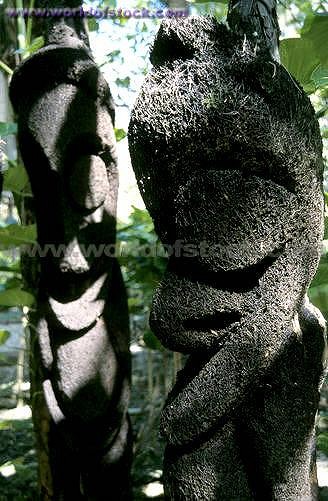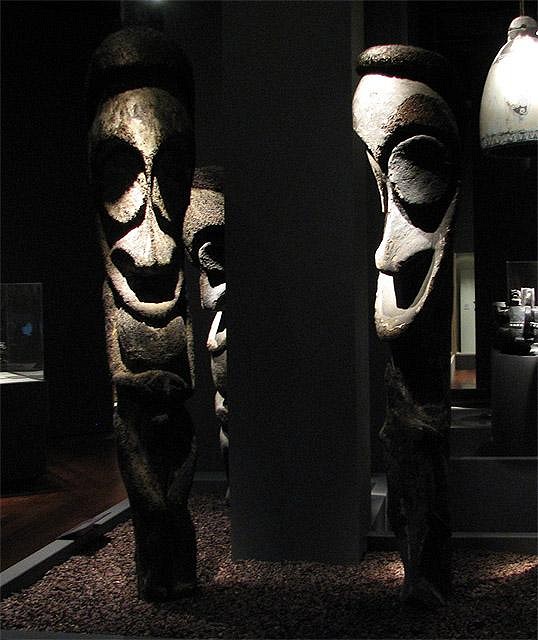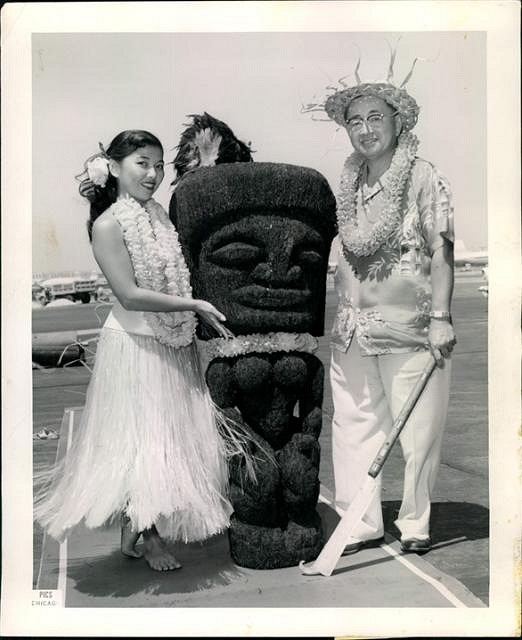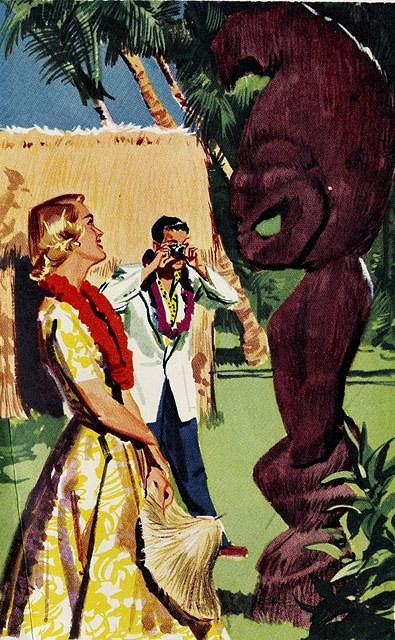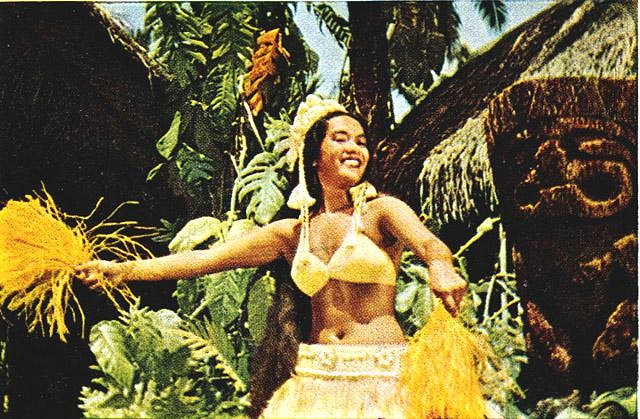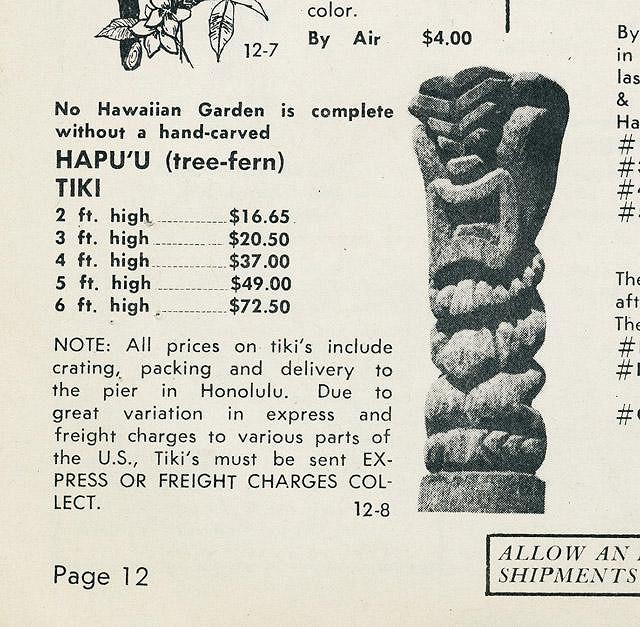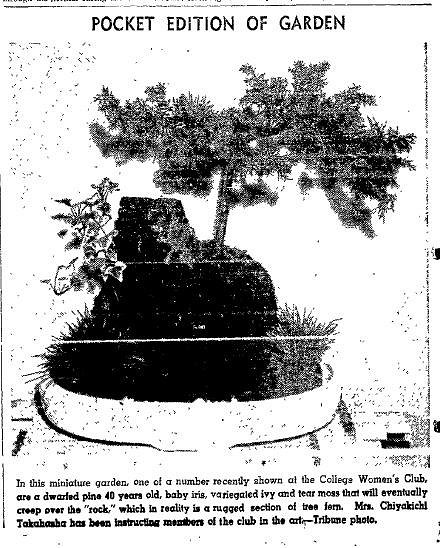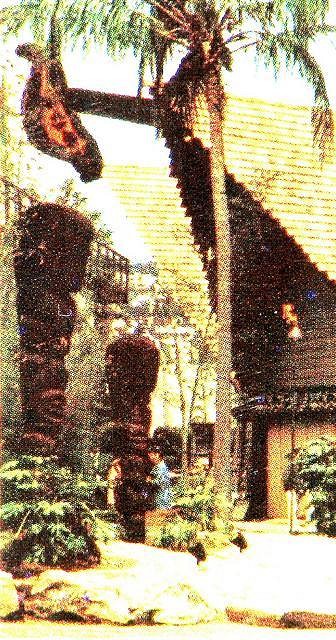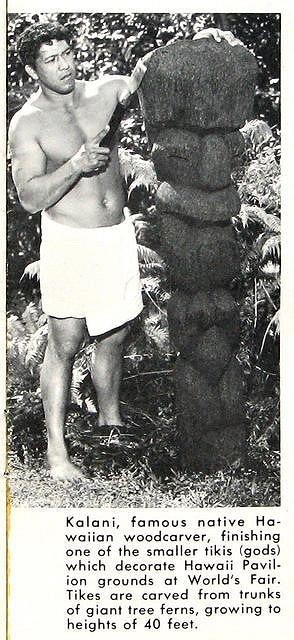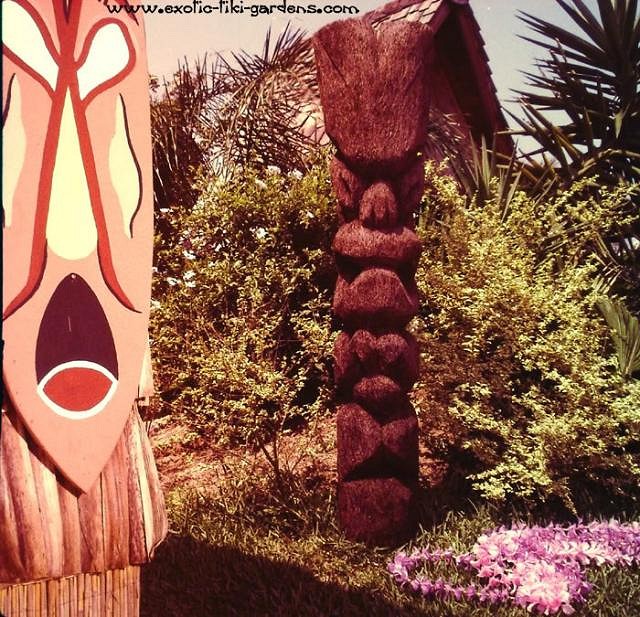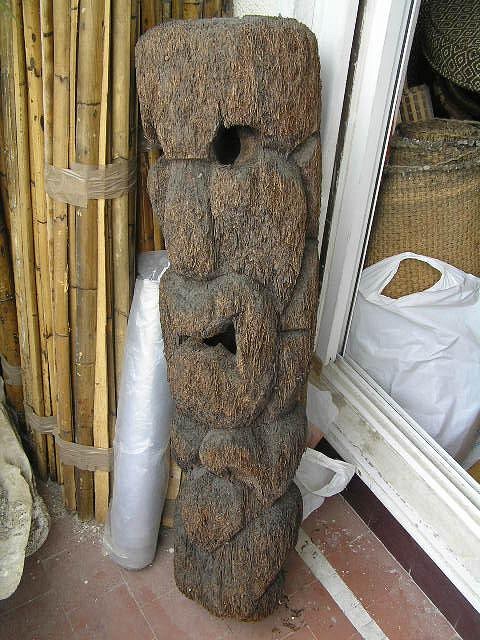Tiki Central / General Tiki / The Mystery of the Hawaiian Fern Wood Tiki
Post #514702 by Sabu The Coconut Boy on Wed, Mar 3, 2010 1:22 AM
|
STCB

Sabu The Coconut Boy
Posted
posted
on
Wed, Mar 3, 2010 1:22 AM
In "Sippin' Safari", Jeff Berry makes the good case that it was largely Ed Brownlee, working for Donn Beach and Wimberly & Cook who revived the art of carving tikis in Hawaii. Using source material from the Bishop Museum, he begins carving tikis for the hotels in the early 1950s. A 1956 article in the Honolulu Advertiser states "There's a new craze going strong in Waikiki! Or should we say there's been a rebirth of an earlier craze? Whichever you prefer, the man behind the current Waikiki woodcarvings is youthful and handsome Edward Malcom Brownlee." But if you look at enough Hawaiian brochures, postcards, photos, and magazines from the same time period, you'll catch a persistent, repeating image; one that is very disturbing if you know anything about ancient Hawaiian history. Fern-Wood Tikis of high quality are being carved in Hawaii in the mid 50s! Why is this so shocking? First, there is no tradition of Fern Wood carving in Hawaii. All the authoritative texts on ancient Hawaiian sculpture list the various hardwoods used, such as ohi'a-lehua and kauila but not tree-fern wood. No Hawaiian artifact made of fern-wood has ever been found in a burial cave or turned up in a museum. Old texts on native Hawaiian plants from the Bishop Museum list the many uses ancient Hawaiians had for the Tree Fern, including dyes, food, and fiber for embalming bodies, but never carving. Tree Fern Roots were indeed being carved in the South Seas, but only in a few places - way over in Melanesia on Ambrym Island of Vanuatu and in New Zealand. The Grade Society carvings below from Vanuatu were traditionally carved of fern wood and plastered over with mud.
The Hawaiian art of carving temple images (what we now call tikis) had been dead since the 1820s. They had never been done in Fern Wood. Why were Tree Fern tikis suddenly being carved in Hawaii in the early to mid-50s? :down: July 1955 - Honolulu Harry imports a carving of the Goddess "Hina" from Hawaii for his restaurant in Chicago. The high style and quality of the carving seems to indicate an art that's been around for a few years. :down: A Hawaiian travel brochure dated 1955 shows this nice fern-wood tiki. This is probably on the grounds of some hotel. The hut in the background is reminiscent of the Ulu Mau Village, but that wouldn't be built for several years to come. :down: This one shows up at a tourist hotel in Tahiti. The copyright date of the book is 1959, so photo probably taken in 1958, possibly earlier. Style is definitely Hawaiian. :down: The market in fern wood tikis seems to be in full swing by the time this Stewarts' Hawaii Inc. catalog dated 1959 is published. Ed Brownlee might have possibly inspired these tikis, but he wasn't carving them. He was carving hardwood tikis and tikis out of old pilings. Who were these other carvers? And why fern-wood? One explanation might be the orchid craze of the 1940s & 50s. Hawaiian tree ferns were being harvested in large numbers, the fibrous wood being ground-up for orchid-planting media, (sold as "hapu'u" or "osmunda fiber") The orchid craze coincides (and pre-dates by a decade or two) the tourist-carving of fern tikis. Perhaps this ready source of fern-root logs was the cheapest, most accessable media for the tourist carvers to begin working on. Were these first carvers New Zealanders living in Hawaii? Or just local Hawaiians skilled at carving other things like bowls and drums, now being called upon by hotel builders and gardening shops to carve tikis? Or were the first carvers Japanese? The Japanese had been carving their native fern wood for ages. A large block of tree-fern wood would be carved into the rugged shape of a mountain which would provide the perfect medium for growing miniature gardens of bonzai trees and other tiny plants. A newspaper article from 1939 states that fern wood for this purpose could no longer be imported from Japan, so was being imported from Hawaii instead. Did the Japanese-Hawaiians turn their fernwood carving skills into producing tikis?
The harvesting of tree ferns for orchid media eventually threatened all four Hawaiian tree-fern species. They are are protected now, which is why you don't see Hawaiian fern-wood tikis being produced anymore. By the early 1960s, we know for sure that native Hawaiians were carving Fern-Wood tikis. Several gigantic ones were shipped over for the Seattle World's Fair in 1962. They were done by a carver named Kalani.
:down: Here's another at Tiki Gardens in Florida, circa 1964. Another curiosity is that the tree-fern tiki seems to have developed into a style all its own. They look like they were originally based on classic Hawaiian Ku designs, but they also share characteristics that have nothing in common with classic Hawaiian tikis. For instance, many of them have their hands in this puppy-dog-begging pose...
... while original carvings of Hawaiian gods had their hands at their sides or on hips in the classic wrestler's pose. Where did the fern-wood style come from? I hope that some of you will post some of your own pictures of fern-wood tikis (the earlier the better). I'm also anxious to hear your own theories as to how this very-early style of mid-century tiki carving developed in Hawaii.
[ Edited by: Sabu The Coconut Boy 2010-03-06 00:10 ] |

